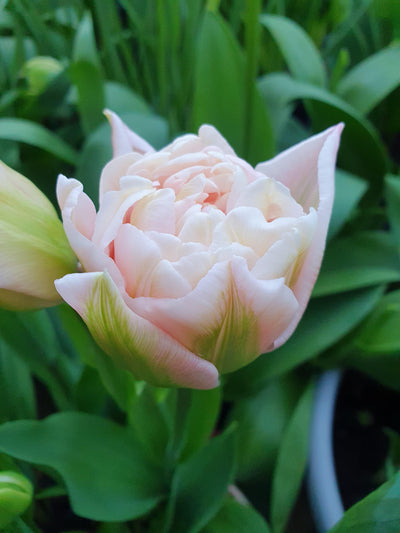'Jobs in the garden this August' by Becky
Late August signals the transition from the height of summer to the cusp of autumn, with colour and abundance aplenty yet colder nights on the horizon. But warmer, hazy days cling on, and summer is determined to make its last days its best.

Now is arguably the peak time of harvest in the garden, from gluts of flavour in the veg garden to armfuls of colour from cut flowers; there is something for every gardener to gather. It is quite literally the fruits of our labours, and the opulence of the garden in late summer is practically unmatched by any other season. The myriad of harvests is often so great that amassing the garden’s glorious goods is perhaps the foremost job of the moment. Gardeners must take time to select the perfect second to pluck the tomato that’s been ripening for weeks on the vine… or watch with baited breath as a favourite dahlia unfurls its petals for the first time this season…
While it is inevitable to be entranced and enthralled by the beauty and productivity of gardens in late August, it is natural for any lover of nature to be completely enveloped by appreciation and wonder. However, it is important to continue partaking in measures of propagation to ensure this bountiful display continues into the coming seasons. Now is the perfect time to take cuttings, with plants producing young, healthy, fresh stems that make ideal material. Not only do cuttings increase your stock of certain plants, they are also an insurance in case there are any casualties during a particularly harsh winter. Herbs such as rosemary and lavender are just perfect and cuttings take readily, while other ornamentals like fuchsias and penstemons also benefit from propagation via this method. More unusual plants such as streptocarpus and echeveria can also be used to take leaf cuttings.

Hydrangeas are perfect for beginner gardeners, all that is needed is a small sprouting stem with no buds that can be cut just below a node and stripped of its lower leaves, then inserted into a free-draining potting compost and placed in a bright spot out of direct sun. It should root within a fortnight, and soon you will have half a dozen new, free plants! Another method of propagation which is ideal for being undertaken in late summer is sowing – hardy annuals get a head start if sown in the lead up to winter in the soil still warmed by the autumn sun’s rays.

Contrary to popular belief, late summer and early autumn is the perfect time to plant into beds and borders. This will give the newly planted perennial, biennial, shrub or tree a substantial advantage in surviving winter and getting a head start next spring. While the soil is still warm, the plant will be spurred into root growth, allowing it to establish a strong and reliable root system before the onset of winter, when it will go dormant. Come next spring, the plant will have a network of roots already settled in and will produce a surge of foliar growth and flower profusely within its first year. Spring planted alternatives will suffer a set-back as they will not have sufficient time in the growing season to both perform well, and establish themselves.
Perhaps the task of the most paramount importance for late summer displays of colour and multitude of harvests is feeding. By giving plants, both flowers and vegetables (container grown and in raised beds) a weekly dose of liquid feed diluted in water they will greatly improve in quality and vigour of growth. Tomato feed is high in potash, and this greatly promotes the production of flowers. By feeding strawberries, dahlias, roses and other plants that need encouragement in flower production with a food designed for tomatoes, they will soon become a profusion of colour and fruit. For plants that need assistance with developing healthier foliage, and for those struggling to find nutrients in the depleted soil of containers – use liquid seaweed. Seaweed contains several useful plant nutrients, including nitrogen, potassium, phosphate and magnesium and will soon have plants feeling and looking reinvigorated.

It may sound hypocritical, and counterintuitive to the most productive of gardener’s beliefs, but it is important to sit down and absorb your garden in late summer. It is necessary to take time to relax and appreciate the elusively hazy summery autumnal days, not only because of the hard months ahead but also due to the hard work that has been previously undertaken this season. Always remember to photograph what is looking most beautiful right now, and drying flowers, herbs and treasures from the veg garden will preserve this moment for reminiscence in the coming months.





Leave a comment